I’ve marveled as I’ve watched Steve’s dynamic new site grow in popularity and importance over the past several months. He brings with him a photographer-based perspective on reviewing gear that is candid, refreshing and enthusiastic.
So, after reading Steve’s glowing reviews of the old and new Leica Noctilux (Leica glow perhaps), I approached him with some of that same enthusiasm and asked if I could write a guest column featuring another special (but discontinued) Leica lens – the 75mm summilux.
My background? Nothing special, as I’m just your average lens hound who has bought and sold way too much gear over the past 10 years in an attempt to find and use those lenses that provide a little extra mojo. (The list of past loves in camera gear alone is embarrassingly long 10D, 20D, 1DS, 5D, D3, D300, Phase AFD III, DMR, M8, M8.2 and now M9).
Gimme Some Of That Mojo
How do you quantify mojo? Beats me. But I do know how to qualify mojo. It’s the image quality you see that makes certain images jump out at you no matter how often you view them on screen or in print. Highly subjective … yes. But, certain lenses do carry a reputation for a reason.
Let’s get on with it, then. If you shoot with Leica M lenses and you like to shoot at fast apertures, crave smooth bokeh and are considering a telephoto lens, take a close look at the 75mm summilux, which was manufactured in Canada and Germany between 1980 and 2007. Why? There are three important reasons.
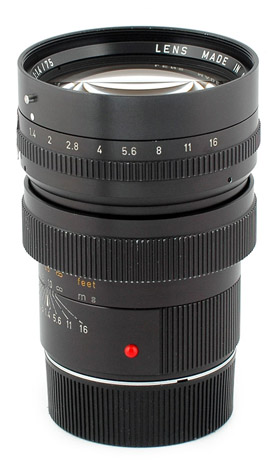
Good Things Come In Threes (And At F1.4)
First, lineage. Dr. Walter Mandler, Leica’s legendary lens designer responsible for the design of the Noctilux, based his design of the 75mm summilux on his design of the Noctilux. If that bit of DNA doesn’t impress you, then maybe this will. In an early 1980’s interview with Tom Abrahamsson, Dr. Mandler felt that the 75 summilux was the favorite of his designs based on its balance between performance and size.
Second, old school, pre-aspherical perfection. It’s amazing how good Leica’s latest lens designs are in providing sharp, wide-open performance. In the digital era, sharpness is the mantra, as digital shooters like to blow up their images at 100% and evaluate their results. This emphasis on sharpness, however, is sometimes achieved at the expense of harsher backgrounds and more abrupt transitions in and out of focus.
The 75mm summilux is certainly not as sharp wide-open as Leica’s newest line-up of aspherical low-light superstars, but the lens should be prized for providing a brilliant combination of softness, sharpness, light gathering and color rendition. If you like to shoot with fast lenses, the 75mm summilux is a fine-art dream. Wide-open, it provides just the right amount of softness and shallow depth of field for portraits and painterly landscapes. Stop the lens down a few notches, and it’ll perform at a level that is close to the newer aspherical designs.
For shallow depth of field lovers like me (I’m sooo shallow), here’s a golden nugget, a 75mm summilux produces shallower depth of field at f1.4 than a noctilux provides at f1. With a 75mm summilux, you get an in-focus zone that includes 2.6” in front of your focal point and 2.76” in back of it at 10’. With the noctilux at 10’ and f1, you get an in-focus zone that begins 4.2” in front of your focal point and concludes 4.44” in back of that point. On the cropped sensor of the M8 or M8.2, the zone is even shallower: 75/1.4 at 10’ means an in-focus zone of 2.04” in front of and behind your focal point; with a 50/1 at 10’ you get an in-focus zone of 3.24” in front of and 3.36” behind your focal point.
Third, the 75mm summilux rocks on the recently introduced Leica M9 revealing all of the M9’s full-frame goodness. While I very much enjoyed using the 75mm summilux on the M8 and M8.2, I often felt like Goldilocks of Three Bears fame because the lens ended up being too long. On the M9, however, it feels just right as a walk around compliment to a 35mm summilux, pulling in and isolating subjects from the background.
But Can I Focus The Damn Thing?
One of the most fundamental questions a photographer must ask himself when he decides to shoot with any fast lens is: How well can I focus this lens? I’m happy to state that if due to nothing more than physics, the 75mm summilux is easier to focus on the M9 than it was on the M8 or M8.2 (that’s because of the increased depth of field in moving from a cropped to full-frame camera that I mentioned above).
If you decide to acquire a 75mm summilux, don’t be afraid to do all that you can to make that focusing experience as positive as possible. That might include purchasing a Leica magnifier as it can provide you with additional viewfinder magnification to ensure that your focal point is exactly where you think it is.
It also might mean making certain that your lens is within calibrated tolerances … remember you are working with a narrow in-focus zone when shooting at fast apertures. Leica and other third party Leica repair resources can help you make certain your lens is calibrated with your camera.
Finally, practice, practice, practice. With rangefinder shooting, it can take time to perfect your ability to shoot within narrow in-focus zones. Don’t give up, as the reward can be stunning. Especially if you have a jones for buttery-smooth shallow depth of field images.
PROS:
• It’s still the fastest Leica telephoto lens available at f1.4.
• Wonderful combination of shallow depth of field, wide-open softness and color make it an impressive portrait and fine art landscape lens.
• Based on the design of the f1.0 Noctilux.
• Dr. Walter Mandler’s favorite lens design.
• Easier to focus on the M9.
• Excellent sharpness stopped down.
• Terrific second lens compliment to the 35mm focal length.
• Still cheaper than a $5000 Noctilux. Most likely a Leica lens that will continue to rise in value even if a new version is introduced down the road.
CONS:
• Not an aspherical lens … meaning it’s not as sharp wide-open as Leica’s latest summilux lenses.
• Size. It’s a big lens. If you are used to shooting with the 35 summicron, it’ll seem huge. If you are used to shooting with a large DSLR zoom lens, it’ll seem small.
• Ability to focus the lens, although it is easier on the M9, can be difficult for some (if so, try a magnifier, determine if the lens is calibrated correctly and practice).
• Availability. The lens is getting harder to find with introduction of the M9. Leica has provided no indication, as of yet, whether or not they will introduce an updated version of the lens.
• Price. Although it can be found used anywhere from $2500-$3500 depending on the age, condition and whether the lens was manufactured in Canada or Germany, the price may continue to rise with the introduction and popularity of the M9.
NOTE FROM STEVE: I want to thank Kurt for writing this article! Not only did it give me a breather, it provided me and all of you with the opportunity to read about yet another one of Leicas great lenses. A lens I have never even held in my hands but always have been intrigued by. I already knew it was a special lens, and even though I have been eyeballing one for years I never pulled the trigger. Maybe one day I will but it’s great to look at samples like these. Wow. M9 and 75 Lux, another super combo. You can see more of Kurt’s work by visiting his blog at phototelling.com.
Here are a couple more of his Leica M9 and 75 Summilux Photos which Kurt tells me were all shot wide open at 1.4 or F2. Enjoy!


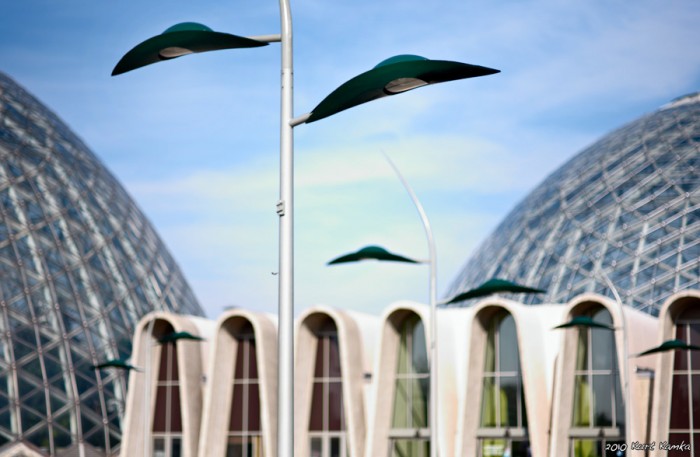
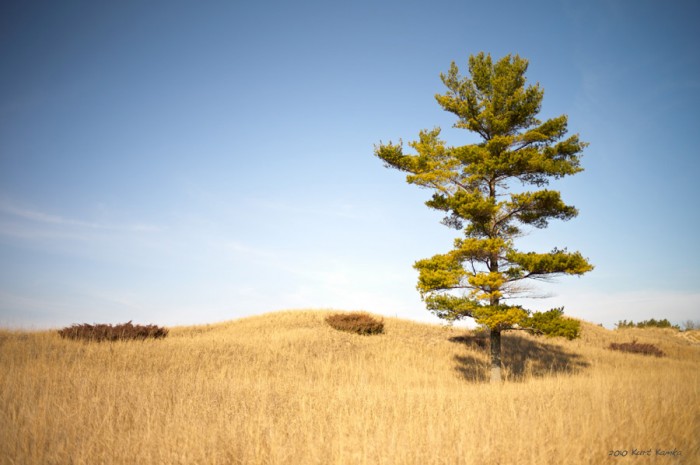

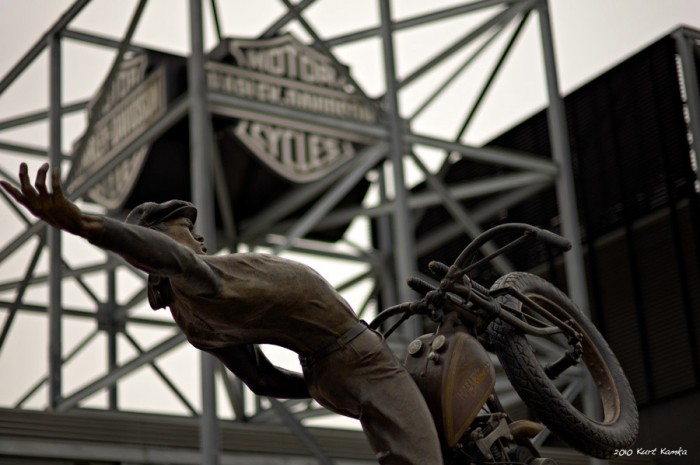
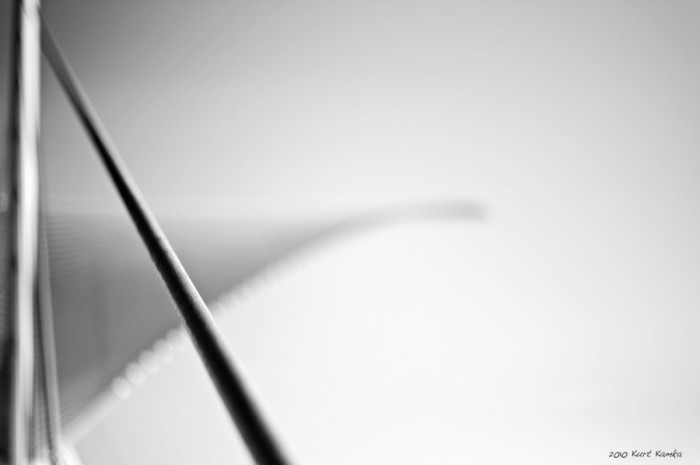
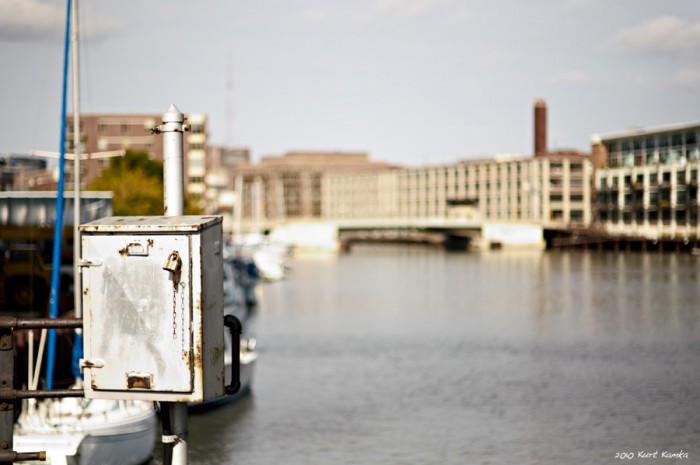
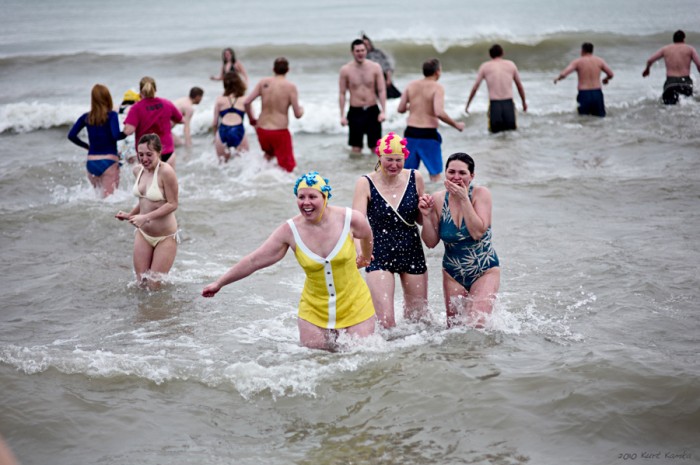
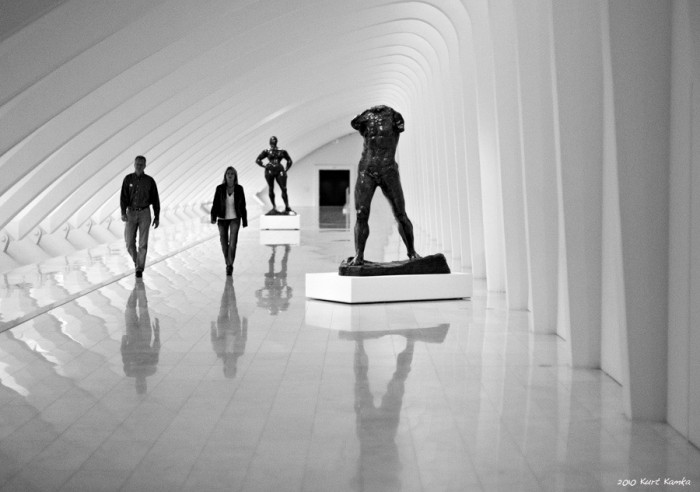
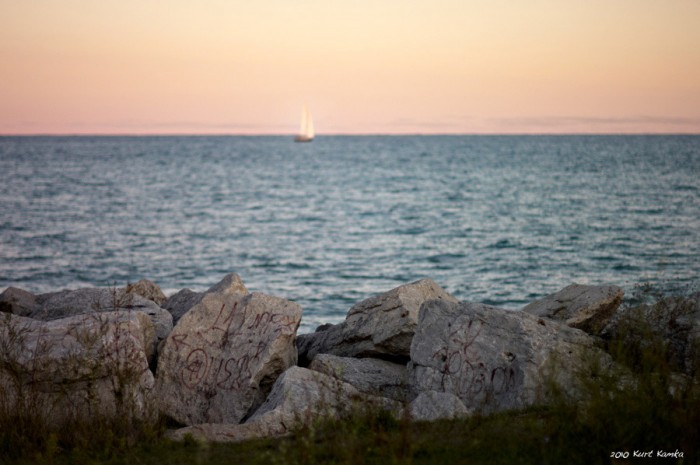

I recently got a Summilux 75mm to use on my M9. My expectations were not really too high, as it seemed to be a forgotten lens. Almost no reviews. And also very few opinions on forums.
When I read Kurt’s review here above I decided to go for it.
And to my astonishment this immediately became my favourite lens ( I like it even better than my Summilux 50mm asph). Quite sharp wide open and the smallest DOF of any lens Leica. (this is of course if you like this, but I do….). And it has also this “painted” look of the Noctilux with the Noctilux type of bokeh. Beautiful for portraiture. Stopped down it is amazingly sharp.
They are getting quite difficult to find though and prices are already rising sharply. Still..if you cannot spend Noctilux kind of money, go for one of these. Highly recommended. The Canadian one is just as good as the German one (hey..Walter Mandler lived in Canada) , but take version 2 with the build in hood.[img]http://www.facebook.com/photo.php?fbid=10150204781049936&set=a.10150128564439936.293331.522559935&type=1&theater[/img]
Great review. Just picked up on this afternoon after seeing some really nice examples of what the lens will do on a M9. Just before trading in my 75mm Summarit for the Summilux, I tried a couple of shots wide open. The Summarit appeared a bit sharper but the Summilux gave a better bokeh that just made the focused subject just “pop”.
One of the reasons I’m looking forward to the arrival of my M9 is to make use of my 75 lux again… it doesn’t work comfortably with my RD1 (no framelines, short RF base, too long with 1.5x) and so has been sitting mostly unused in my cabinet for years…
Tag to follow comments
I just picked up a late Canadian copy of this lens this week. The Canadian lenses are a better value, as the price premium for the German ones is nearly 100% on a good copy ($2500 for a mint Canada lens vs. $4500 for the same lens made in Germany) and of course they are identical in all respects except for the location of assembly.
I think this will become one of my favorite lenses on the M9, especially for portraiture. The very slight bit of softness wide open gives portraits a very lovely touch, and the roll-off to the OOF zones is very smooth. To me the rendering is a lot like the rendering of the Voigtlander 50/1.1 Nokton or the 50/1 Noctilux.
Here’s an example shot of my daughter: http://farm5.static.flickr.com/4030/4257178720_2fb5982ac1_o.jpg
Jeff
one of my favorite lenses in the m regiment.
i’m a fan of all things mandler, the only problem i have with this is that it’s so damn close to my noctilux! it’s hard to pry that lens off my body, it’s the best performance lens of the arsenal, as the long focus throw makes it a breeze to focus on moving targets. the noctilux is just as easy to focus for that reason.
unfortunately i find myself shooting wtih the noctilux and the 90 apo asph as a combination over the 75 & 90 which i sometimes rock. either way – if those are my problems things are looking good!
haha.
Ashwin is right, it is a total misconception that subjects become easier to focus on the full frame M9 as opposed to the cropped M8. It is actually the complete opposite. Due to the FF sensor of the M9, accurate focus has become more critical which is why more and more people are finding that their lenses/cameras need calibration. This is nothing new, it’s always been the case with Leica RF’s. The only difference is that instead of waiting for your film to come back from the lab, thus perhaps forgetting what you actually shot it at and also the more forgiving nature of film, we are now looking at our images immediately at high magnification on high resolution LCD displays.
Still, I don’t really find this to be an issue as my opinion is that absolute focus is over-rated.
~Blackrooster
Hey Kurt, thanks for bringing out this wonderful forgotten lens back to the light.
I have owned (and still own) this lens since ever and though I have the new 75mm summicron f2 Asph, whenever I want to do a “Human” portrait”, I always go back to this lens (Summilux 75mm f1.4) which yields “Natural” images. At F1.4, the images are dreamy yet well affirmed, and at f4 or f5.6 the lens becomes snap sharp and competes with the best asph designs in contrast and sharpness. This link shows the lens behaviour at f1.4 http://carlosaoun.com/images/photos/325818283.jpg
and this one at f4 http://carlosaoun.com/images/photos/20538282.jpg
Steve, you are going to fall for this lens when you try it, same Noctilux Behavior but closer focusing (70cm) and better defined image at f1.4
Hey Troy! Great to see you here. It was mutual admiration as you showed me your M6 and Hasselblad X-pan which convinced me that rangefinder shooting…especially Leica rangefinder shooting was for me. I haven’t looked back since.
Ashwin, I based my calculations on the DOF calculator I found on the following web site:http://www.dofmaster.com/dofjs.html I’ve found it quite helpful in understanding some of the aspects of depth of field. But, I admit, that I am not an expert and that my eyes glaze over when people start talking about circle of confusion topics.
Thanks for the guest review. I’ve heard of focus shift on that 75mm but i would suppose that one could get it adjusted on the prefered f stop as mentionned in the article.
Great series….I am curious about the depth of field commentary, though. It was my understanding that the larger the sensor, the more control over depth of field (hence, the d-lux 4, even with it’s f/2 lens, has fairly deep depth of field). Thus, with the 75 summilux on the M9 (which has a bigger sensor than the M8), shouldn’t depth of field be even narrower (and thus, focus harder to achieve)….Kurt seems quite knowledgeable on this point, but it’s something I was hoping to have clarified….
@Ashwin (thread #2)
You are spot on with your comment – DoF DECREASES with increasing sensor size – so focussing becomes in general more difficult when going from crop sensor to full frame to medium format…
There is a nice online calculator to play with the facts:
http://www.dofmaster.com/dofjs.html
Regards,
Michael
=->
Great to see a “guest review” by Kurt here. I’ve know him for a couple of years now and know how knowledgeable and passionate he is about his equipment. Kurt is the reason I’m a Leica DMR owner now, using it for all my professional editorial and commercial work!
The 75 ‘lux sure is a special lens and one I’ve always wondered about. Thanks for the insights, Kurt!